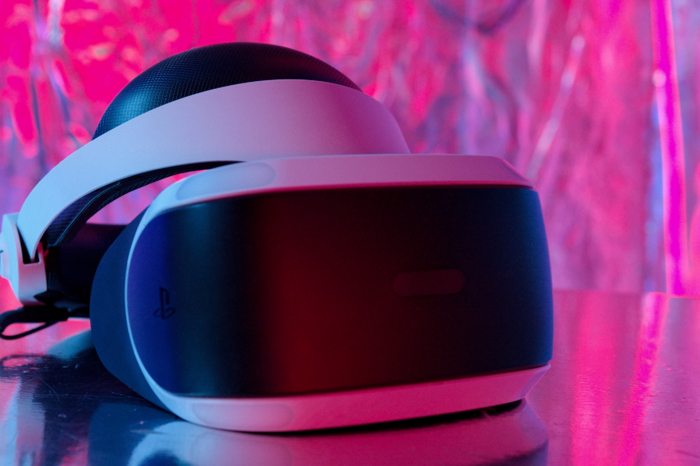Smart companies know the importance of using data to inform their strategies. When it comes to event organizing, data can provide a clear roadmap for understanding what attendees want and the factors that drive ROI for exhibitors. Luckily, event organizers don’t need to be analysts to glean insights from their data and use that information as a catalyst for creativity and sustainable event success.
“While data such as attendee preferences or session engagement provides a blueprint, creativity comes into play in crafting unique experiences tailored to those insights,” says Jeff Moore, vice president of technology and innovation at MCI USA. Moore led the launch of MCI USA’s AI-enhanced registration and housing platform OneSystem Plus, which includes Jade, a 24/7 multilingual AI assistant that answers questions and performs tasks like a chatbot.
By leveraging AI tools, Moore says, event organizers can assess key analytics to help with tasks such as creating personalized content and experimenting with new ideas, testing creative concepts against real-time feedback. This approach ensures that data guides innovation rather than constraining it, fostering a balance between logic and imagination. Leveraging the power of AI not only refines logistical efficiency — it elevates the overall attendee experience.
Key Data Points that Impact Your Event Strategy
Event organizers have access to key data that can significantly shape future event strategies. AI tools play a crucial role in collecting and analyzing this information, turning raw data into practical insights. Here are three critical data points event organizers should focus on:
- Attendee behavior. “Tracking attendee behavior reveals what captures attention and what doesn’t,” Moore says. Key metrics include session attendance, dwell time in virtual or physical spaces, poll participation, and content interactions such as downloads or app usage. These insights can guide the development of future session themes and speaker selections. Attendance numbers, feedback scores and repeat views of recorded sessions further highlight which content resonates most with attendees. Onsite, AI tools offering real-time insights enable immediate adjustments, such as reallocating rooms for high-demand sessions or scheduling repeat sessions.
- Engagement levels. Engagement metrics focus on real-time participation and interactive elements of an event, such as poll responses, live Q&A sessions and networking activities. For instance, questions asked during Q&A sessions can reveal attendee priorities and key areas of interest, while AI tools can analyze and categorize these in the moment. Networking data, including connections made, breakout room participation and usage of virtual tools, highlights how attendees interact with one another and can help refine formats and features for future events.
- Exhibitor ROI. Creating a compelling value proposition for exhibitors demonstrates the tangible benefits and returns they can expect from their participation. By providing clear data on booth traffic, time spent at booths, lead generation and post-event follow ups, event organizers can highlight the direct impact on exhibitors’ business goals. “Exhibitors want to see a clear return on investment,” Moore says. “This data helps organizers refine exhibitor packages and optimize booth placements for maximum ROI.” This can lead to a more diverse and engaging event for attendees and a better experience for exhibitors.
How to Analyze and Interpret Post-Event Data
Collecting data is only half the battle. To shape future event strategies, organizers must understand how to use it. How can you get the most out of your data?
- Set clear objectives from the start. Before diving into data, identify key event goals (e.g., increase attendee engagement or boost exhibitor ROI). Make sure the metrics you’re tracking align with these goals.
- Prompt your AI assistant for unique insights. Use specific queries to uncover deeper insights. For example, with AI assistant Jade, you can identify patterns in attendee behavior across different sessions, report on attendee demographics or highlight underperforming areas that need attention.
- Identify patterns and trends. Look for recurring themes, like which session types consistently perform well or which exhibitors generate the most engagement. Additionally, analyze attendee feedback by inputting comments into your AI tool to get summaries and suggestions for improvement. Track engagement over time, compare different audience segments, and evaluate content performance to uncover deeper insights and refine future strategies.
- Leverage predictive analysis. AI tools can help predict future trends based on historical data. (Think about the attendee behavior data point and how that can be used to forecast popular content.) This proactive approach allows organizers to plan more effectively, ensuring resources are allocated efficiently and potential issues are addressed before they arise.
- Create dashboards for visualization. Dashboards present data in clear, visual formats, making it easier to spot trends and correlations. They also make it easier to share with any stakeholders who might be interested in the information.
- Highlight actionable takeaways. Use the insights you’ve gathered to refine event agendas and communications, project plans, marketing strategies and exhibitor offerings for future events. This ensures that all team members are aligned and that improvements are systematically implemented in the planning process for the next event.
By collecting and analyzing key data points, organizers can use AI tools to create more personalized, engaging and successful events. With AI’s ability to provide real-time insights and automate repetitive tasks, event organizers can focus on strategy and creativity, ensuring each event builds on the success of the last. As Moore states, “Embracing data-driven decisions is no longer optional; it’s essential for future-focused event planning.”

